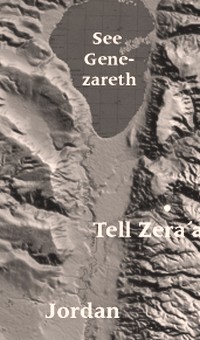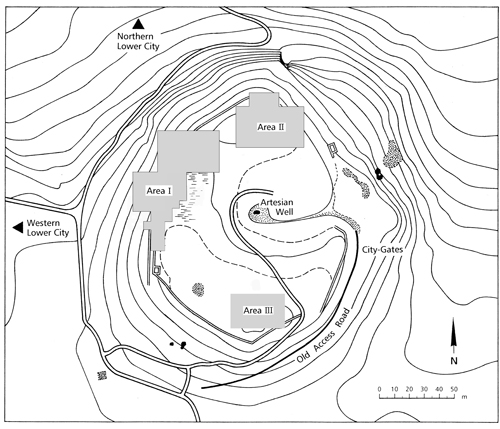
Tall Zira'a in in the border triangle Jordan, Israel and Syria.
Tall ZirāĎa - 5000 Years continuous settlement
With Google-Earth to the Tall ZirāĎa (click here)
There are very few places on either side of the Jordan River where it is possible to explore the history of the Southern Levant in such a small area as in the Wādī al-ĎArab. This deeply incised valley with all its diversity is an archaeological stroke of fortune. Numerous springs, fertile soil and a temperate climate afford excellent living conditions.
Tall ZirāĎa is located in the middle of this valley, and the research focuses on exploring this hill. Continuously occupied for at least 5,000 years, it offers unique insights into the way of life of the regionís people. Its outstanding archaeological significance is a result from the artesian spring located in its centre, which created exceptional settlement conditions over thousands of years. For this reason, Tall ZirāĎa offers a unique opportunity to compile an unbroken comparative stratigraphy for northern Jordan from the Early Bronze Age to the Islamic period. It allows to trace cultural developments in urban life, handicrafts and the history of religion over long periods. In addition, it is possible to study the abundant remains from biblical times in the context of other cultural and historical periods.
The German Protestant Institute of Archaeology in the Holy Land (GPIA), in cooperation with the Biblical-Archaeological Institute Wuppertal (BAI) as well as with other scholars and scientific institutions, are working on the exploration of the lower section of the Wadi al-‛Arab. After the BAI started the archaeological explorations in 2001, the GPIA Institutes in Amman and Jerusalem have participated in the project since 2004 and 2006, respectively.

Area I - III (2009)
The aim is to explore the diverse civilisations, spanning 8,000 years in the history of humankind, in this geopolitically important wadi, which is attractive not only because of its landscape but also because it served as an important link between the Mediterranean and Transjordan. The most significant site in the Wadi al-‛Arab is Tall Zira‛a (geographic coordinates: 211 940/225 180). The tall measures approx. 200 m in diameter; its highest point is located at 17 m below sea level.
|
Project Partners |
|
Biblical Archaeological Institute Wuppertal (BAI) |
|
Patronage |
|
His Royal Highness Prince El Hassan bin Talal took up the patronage of this project as a representative of the royal house. |
Friends and Donors |
|
Cooperations |
|
We cooperate closely with many universities, institutes and companies.  |

 print version
print version
